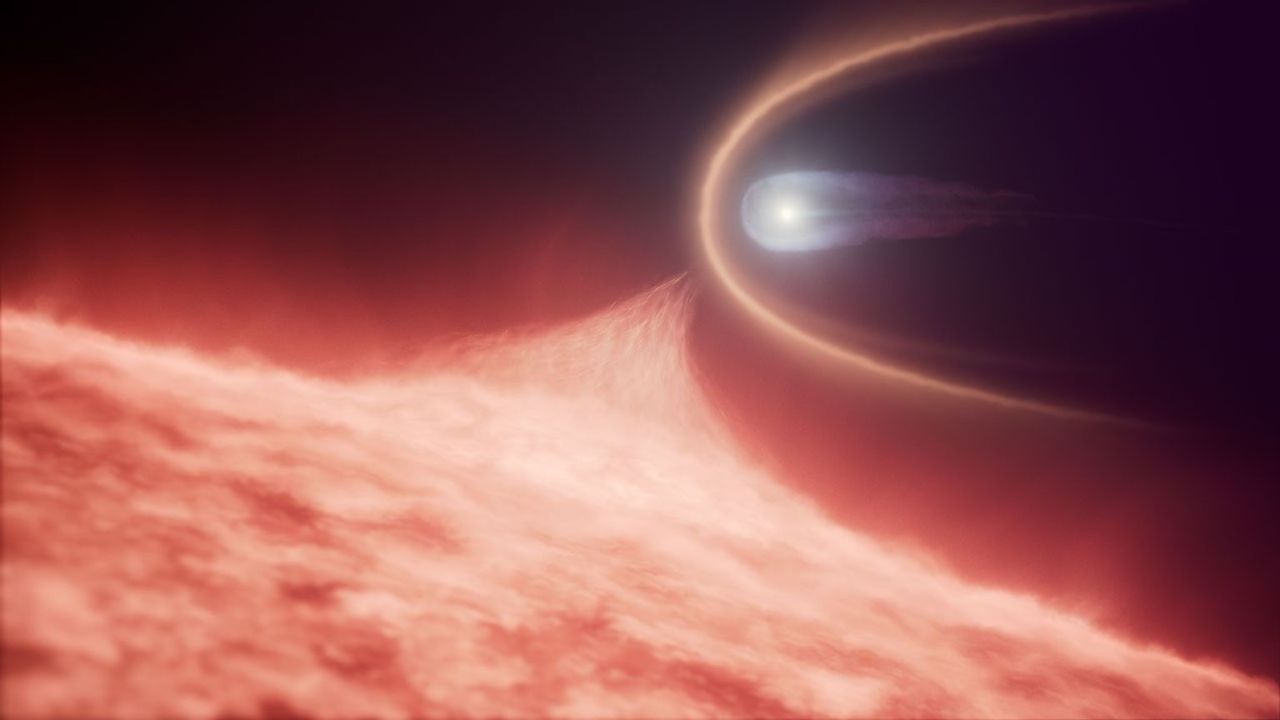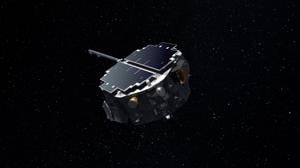Science
Hubble Telescope Reveals Dramatic Origin of Unusual Star

Astronomers using the Hubble Space Telescope have made a groundbreaking discovery regarding a seemingly ordinary white dwarf star, revealing its dramatic origins linked to a stellar merger. This finding, outlined in a new study led by Snehalata Sahu and Boris Gaensicke from the University of Warwick in the United Kingdom, suggests that many other “normal-looking” white dwarfs throughout the universe may also harbor violent pasts.
The star in question, designated WD 0525+526, is located approximately 128 light-years from Earth. Initially, it appeared typical when viewed in visible light. However, detailed observations with the Hubble telescope uncovered significant evidence of a more tumultuous origin. Gaensicke, a professor of physics at the University of Warwick and principal investigator of the Hubble program, stated, “It’s a discovery that underlines things may be different from what they appear to us at first glance.”
Unveiling the Stellar Collision
White dwarfs are dense remnants of stars that have exhausted their nuclear fuel and collapsed into objects roughly the size of Earth. They can possess mass up to 1.4 times that of the sun. Most white dwarfs form from the predictable evolution of single stars nearing the end of their life cycles—a fate that our sun is expected to follow in about 5 billion years. However, WD 0525+526 may have taken a far different route.
Research indicates that this star likely formed from the violent collision and merger of two stars, rather than a single dying star. This explosive history has left detectable traces in the star’s atmospheric composition. When Gaensicke and his team employed Hubble’s ultraviolet instruments to study WD 0525+526, they found an unusual abundance of carbon in the star’s atmosphere—a key indicator of its merger origins.
Typically, white dwarfs possess outer layers of hydrogen and helium, which obscure their carbon-rich cores. In merger events like that of WD 0525+526, the intense collision can strip away these layers, allowing carbon to surface. While such characteristics are hard to identify through visible light, they become apparent in ultraviolet wavelengths, where Hubble excels.
Implications for Stellar Research
WD 0525+526 stands out even among the limited number of known white dwarfs that are remnants of mergers. With a surface temperature nearing 21,000 Kelvin (approximately 37,000 degrees Fahrenheit) and a mass of 1.2 times that of the sun, it is both hotter and more massive than most in this unique category. The initial appearance of WD 0525+526 in visible light has led astronomers to believe that many more white dwarfs might be concealing similar explosive origins.
Antoine Bedrad, a co-researcher from the University of Warwick, expressed the desire to further investigate this phenomenon. “We would like to extend our research on this topic by exploring how common carbon white dwarfs are among similar white dwarfs, and how many stellar mergers are hiding among the normal white dwarf family,” he noted. This inquiry could significantly enhance our understanding of white dwarf binaries and the pathways leading to supernova explosions.
The findings from this research were published on August 6, 2023, in the journal Nature Astronomy. The implications of this work extend beyond the discovery itself, providing a new lens through which to view the evolution of stars and the complex processes that govern their life cycles.
-

 Technology5 months ago
Technology5 months agoDiscover the Top 10 Calorie Counting Apps of 2025
-

 Health2 months ago
Health2 months agoBella Hadid Shares Health Update After Treatment for Lyme Disease
-

 Health3 months ago
Health3 months agoErin Bates Shares Recovery Update Following Sepsis Complications
-

 Technology4 months ago
Technology4 months agoDiscover How to Reverse Image Search Using ChatGPT Effortlessly
-

 Technology1 month ago
Technology1 month agoDiscover 2025’s Top GPUs for Exceptional 4K Gaming Performance
-

 Technology2 months ago
Technology2 months agoElectric Moto Influencer Surronster Arrested in Tijuana
-

 Technology5 months ago
Technology5 months agoMeta Initiates $60B AI Data Center Expansion, Starting in Ohio
-

 Technology5 months ago
Technology5 months agoRecovering a Suspended TikTok Account: A Step-by-Step Guide
-

 Health4 months ago
Health4 months agoTested: Rab Firewall Mountain Jacket Survives Harsh Conditions
-

 Lifestyle5 months ago
Lifestyle5 months agoBelton Family Reunites After Daughter Survives Hill Country Floods
-

 Technology4 months ago
Technology4 months agoHarmonic Launches AI Chatbot App to Transform Mathematical Reasoning
-

 Technology3 months ago
Technology3 months agoUncovering the Top Five Most Challenging Motorcycles to Ride





















